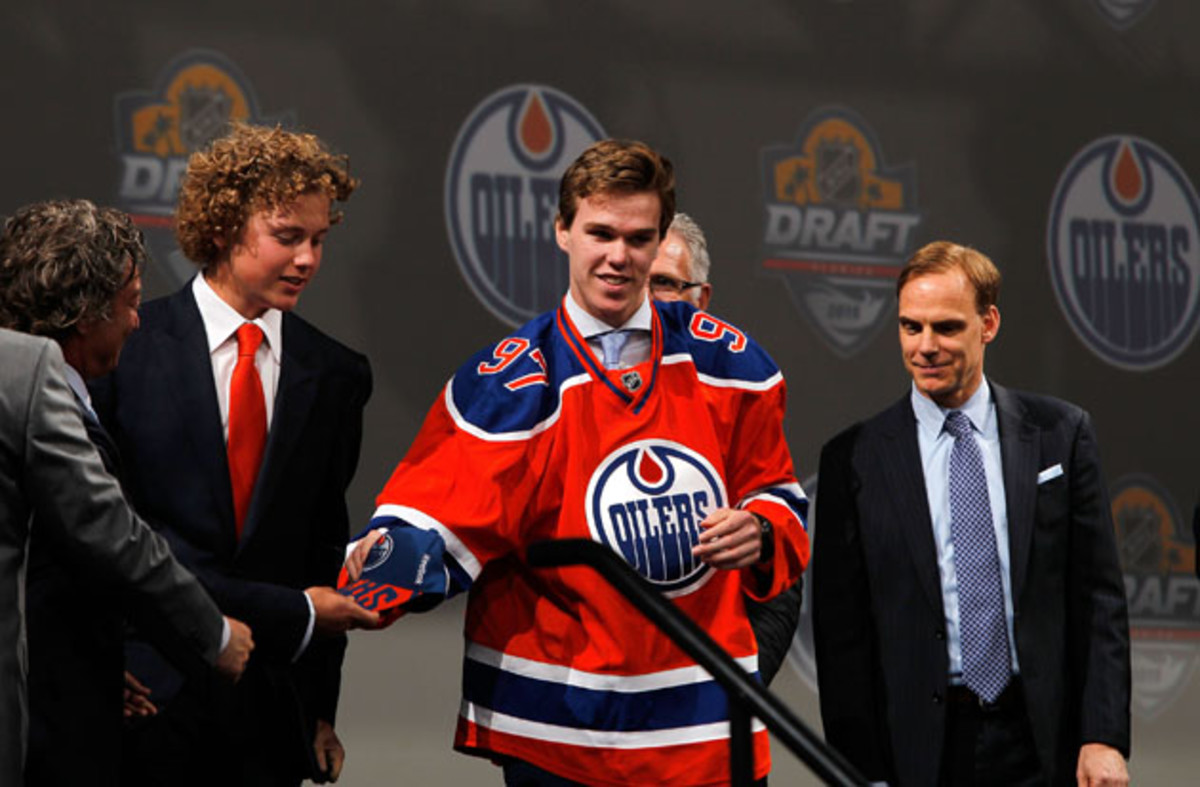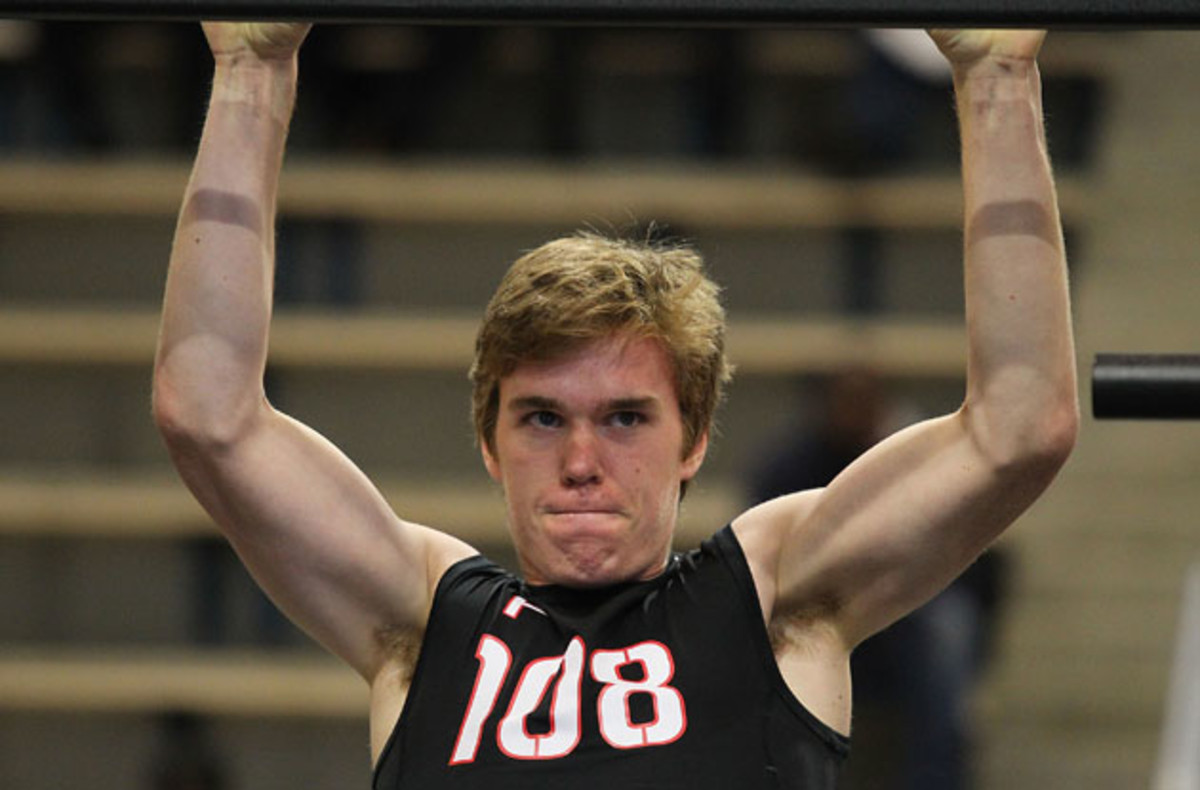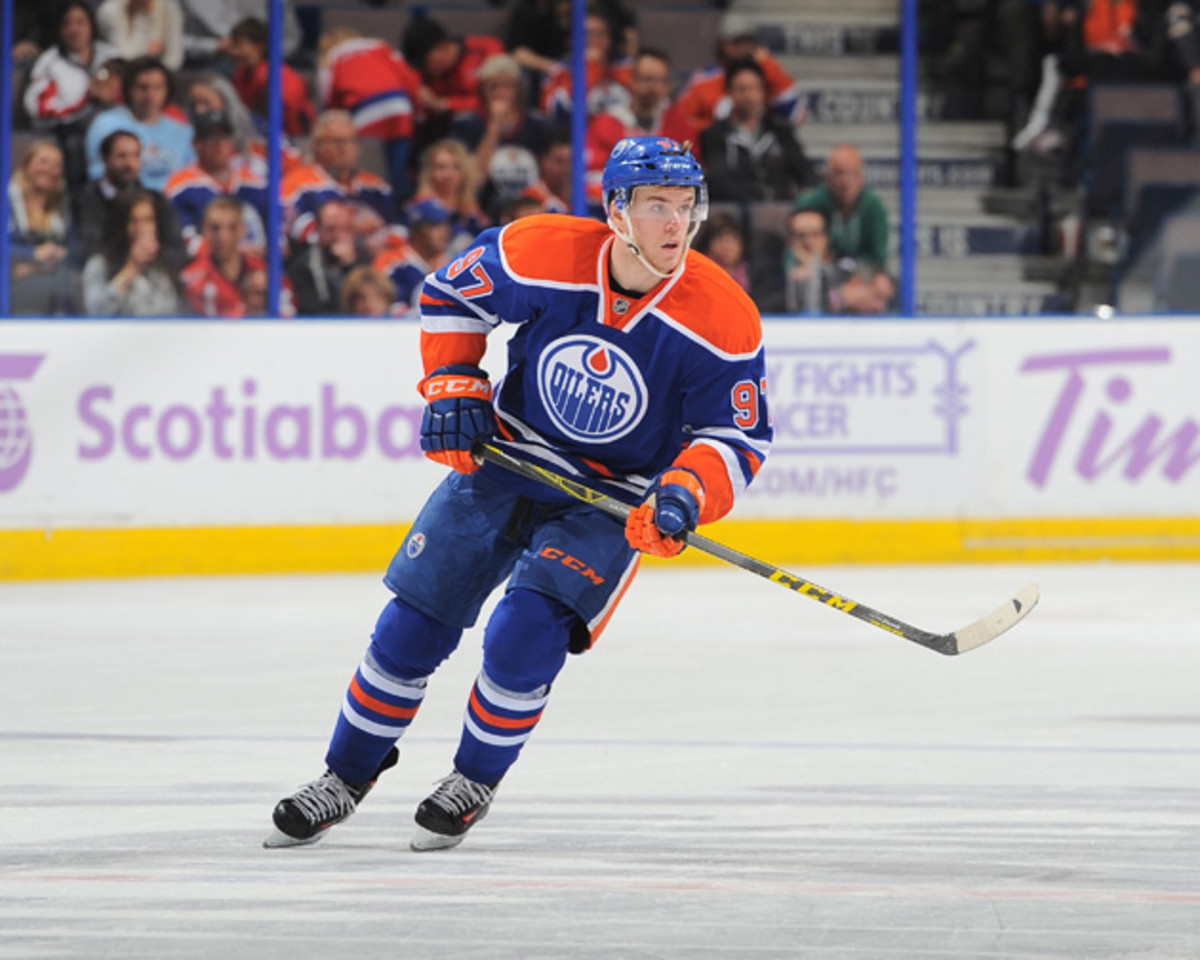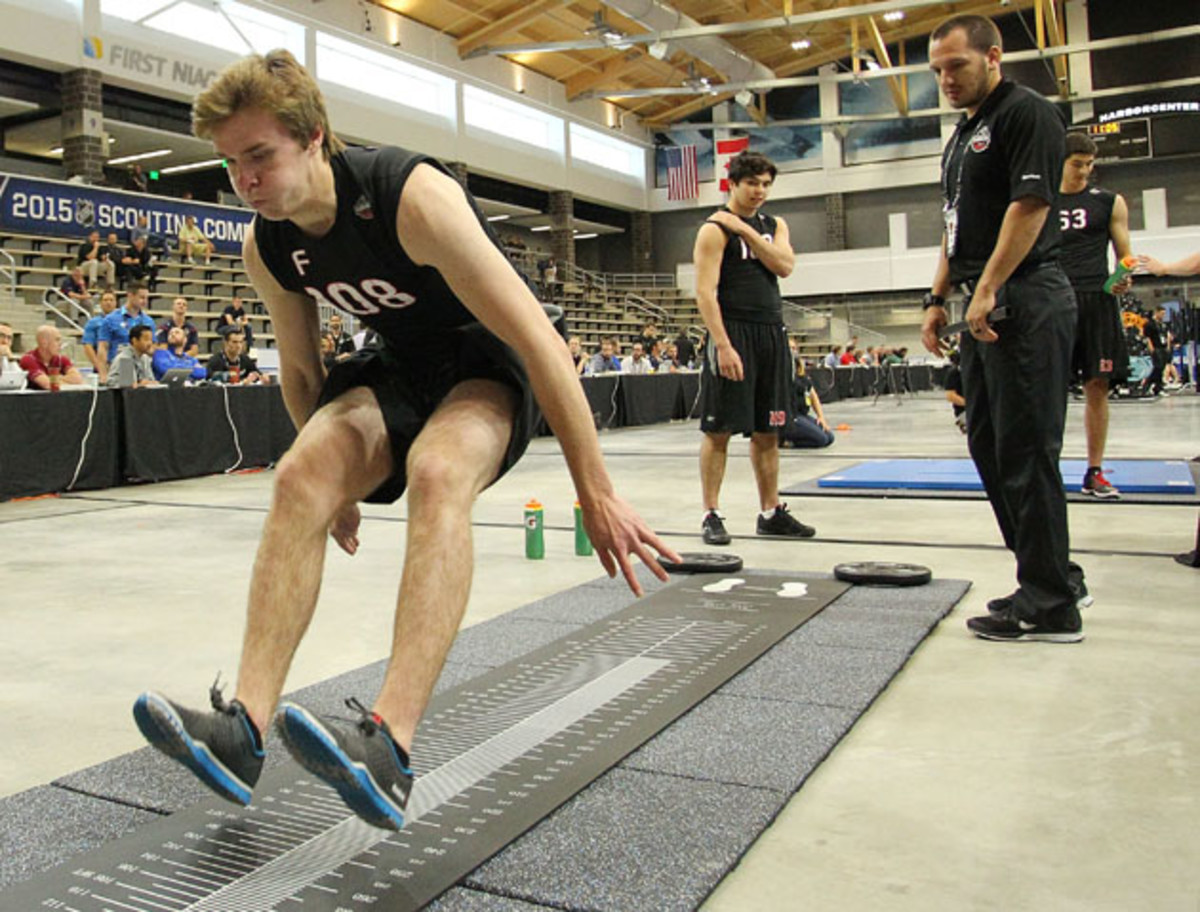Behind the Body: Edmonton Oilers rookie center Connor McDavid

In a world too often clouded by pessimism and unhealthy karma, there’s one 18-year-old who’s proving that an a sense of maturity beyond his age can not only lead to an impressive level of fitness, but also can foster the potential to reach the apex of the National Hockey League.
Edmonton Oilers center Connor McDavid, who was selected No. 1 in this year’s entry draft after capturing honors with the Erie Otters as the Canadian Hockey League’s player of the year and Ontario Hockey League’s most outstanding player of the year, has even caught the attention of someone who knows all about excelling in the NHL.
“[Connor’s] a very mature, hard-working young man who has very good hockey vision, an extra gear in his skating and—more important—works hard every shift, every game,” says Wayne Gretzky. “He will be a solid addition to the Oilers and the NHL.”
“With his focus on the game of hockey you just know he is going to do great things,” says friend and Carolina Hurricanes’ defenseman Noah Hanifin. “For someone with his talent, he is such a low-key and humble person. He’s not only a great hockey player but a really good person.”

The success McDavid enjoyed as an amateur will continue to be cemented in the weight room by a solid strength and conditioning regimen, largely put together by former NHL standout Gary Roberts at his training facility in Ontario.
“I think Connor being able to work with Gary Roberts the past couple of years will help him immensely when it comes to adjusting to the game quicker,” Tampa Bay Lightning captain Steven Stamkos says. “He has that competitive edge over players his age because of the proper training and nutrition he has been exposed to.”
In a recent phone conversation, the soft-spoken McDavid went over the details of his training and explained his approach to his sport. Meet number 97—who, interestingly, was born in 1997—Connor McDavid.
AGE | HEIGHT | WEIGHT |
|---|---|---|
18 years old | 6-foot-1 | 197 lbs. |
The beginning of his training program and motivation: “I started serious training when I was about 15. I was starting the next chapter of what I was going to eventually go on and do, and that was play in the OHL. [Training] with a guy like Gary, I wanted to get started on it early because I was going to make the jump to the OHL the next year and being 15 years old, I needed to do something—gain some sort of advantage or at least gain some size.”
Evolution of his body: “Things changed a lot, just with growing older [and] kind of going through that maturing stage through the years—that has a lot to do with it. Plus, [having] a guy like Gary—that helps a lot, in terms of building muscle or working with your body.”

Comparison to other athletes in the same age group, in terms of his progress: “Other athletes my age … I don’t necessarily know. Hockey trainers have got to be the most sports-specific [trainers]. It’s so different from anything else—you don’t rep out 100 bench presses; that’s not going to do a whole lot to you in hockey terms. In fact, the sport is different—it’s on ice and the movement of skating is pretty abnormal to the body, so you’re using a lot of different muscles.”
Offseason workout location: Gary Roberts High Performance Centre, North York, Ont.
Offseason training days: “Five or six days a week. It’s mostly Monday through Friday, and some Saturdays here and there. Sundays are always off.”
Offseason workout: “You go through phases. Phase 1 [is] right after the season; I might have taken two or three weeks off after [my] last game. That’s to make sure the body is feeling OK—strains, bruises or bumps from the year. You make sure that your body is generally moving well, preparing you for the next stage.
“[Phase 2 is the] big phase where you’re doing mostly the bulk of your mass—a lot of deadlifts and squatting; lower reps, higher weight.
“Then, you move into Phase 3, where it’s more of conditioning, cardio, agility and speed work—getting me ready for training camp, in terms of overall fitness. That could be anything from a shuttle run to going for a long run.”
Unique exercises: “Gary has a whole bunch. He does a lot of one-legged [exercises and squats]—that’s a little bit unusual. It’s pretty hard.”

Least favorite exercise: Cardio. “It’s never fun. I’m either doing running or jumps, or something like that, so those are never fun.”
Strongest muscle group: Legs. “I have some pretty strong legs. For any hockey player, I think that’s one of the areas to consider the strongest—you’re always on them. That’s a key component to the game—skating, and the legs kind of feed that.”
On training with the Oilers to prepare for the upcoming NHL season: “I came to development camp and that kind of gave me a good idea of where I was at. I feel I was doing pretty good [by] how I was playing. … My summer was a lot of trying to get bigger, stronger, faster—the kind of things everyone’s trying to do. That’s a pretty standard goal, in terms of summer training. I wasn’t doing anything crazy; I wasn’t doing anything out of the ordinary, necessarily—just kind of a regular summer, making sure that I was feeling good and stronger.”

Exercise most essential for on-ice performance: “That’s a tough question. I would say leaps or bounds, or maybe a long jump—anything where you’re either going side-to-side or pushing yourself forward. That kind of simulates a stride, and power going forward is the main thing in skating.”
Favorite recreational activity and active rest: Swimming. “I love swimming, and it’s still pretty tough on the body. It’s good on the shoulders. It’s not necessarily the most straining [activity] but it’s still a good workout at the same time—good for active recovery.”
Thoughts on training to music and favorite workout tunes: “I’m not necessarily the biggest music guy. [I’m] more just like a top 100 kind-of-guy. Whatever is good now is what I listen to.”
On nutrition: “A typical breakfast would be eggs and some veggies. Lunch would be generally chicken and rice. For dinner, maybe a steak [and] there’s always salad, usually, with the meal. … I like anything—just no condiments. I can’t eat ketchup or anything like that.”
[youtube=https://www.youtube.com/watch?v=smgEjkcIvq8]
On snacking between meals: “[I] typically use trail mix or some kind of berries.”
Guilty pleasure: Twizzlers. “I’m a big candy guy, I’ve got a pretty big sweet tooth. I love licorice.”
Favorite pregame meal: “I’m a pretty boring person, I usually eat the same things before every game—chicken and rice. It’s pretty light and makes you feel good. I just stick to what I know.”
Behind the Body: Nationals pitcher Max Scherzer hits the weights
Go-to drink:
Thoughts on fitness on the professional level: “There are a bunch of different body types and unfortunately for me, I haven’t necessarily been blessed with a huge body type—I have a pretty normal body in that way. I think overall fitness is just to feel good; to me, it’s about feeling good, continuing to be strong and moving well.”
NHL fitness idol: Steven Stamkos. “I’ve actually watched him train at Gary’s place, and watching this guy train each and every day is pretty special—he’s an overall athlete, he’s so powerful, he’s a pretty special guy to watch.”
Fitness advice to amateur athletes looking to make the pros: “It’s everything—your body is worth everything. Without it, you can’t play the game; you have to take care of it, keep getting better each and every day … get stronger. Working out, keeping strong and making sure that everything is moving well [is everything].
